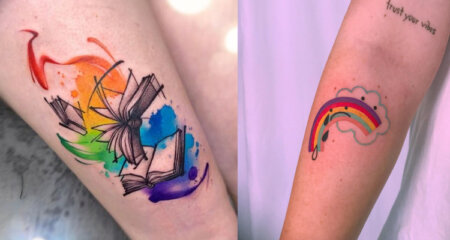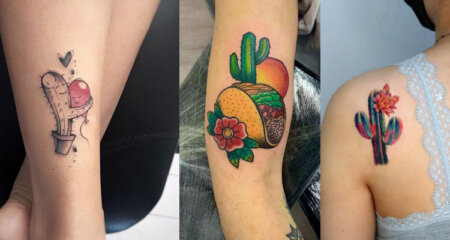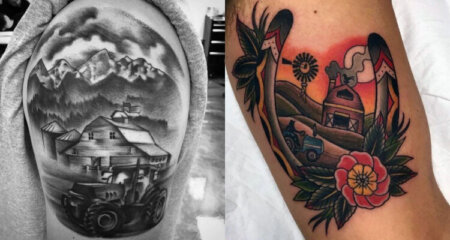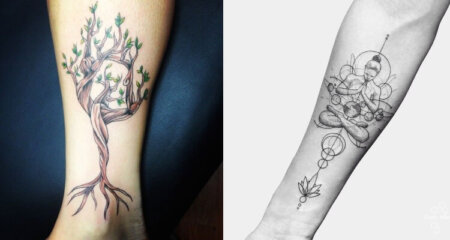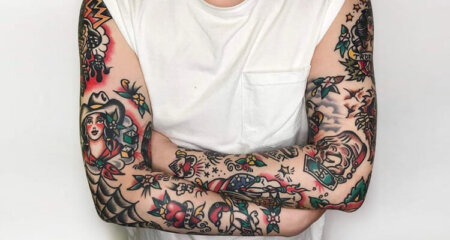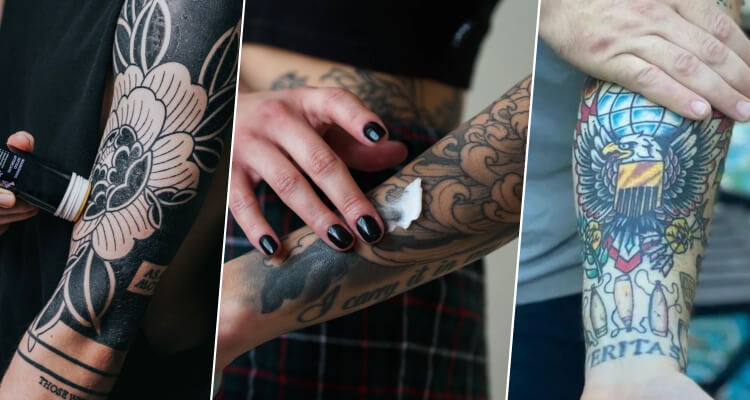
Tattoo Peeling: How Long Does It Take to Heal?
Posted on
Getting a new tattoo is an exciting and deeply personal experience. However, it’s not just about the moment you’re inked; it’s also about the journey your tattoo takes in the days and weeks that follow. One inevitable stage of this journey is tattoo peeling.
As your body works to heal and protect the freshly-inked skin, you might wonder, “How long will my tattoo peel?” Understanding the tattoo peeling process and its duration is essential for proper aftercare and peace of mind. In this blog, we’ll delve into the intricacies of this natural healing process so you can embark on your inked adventure fully informed.
What is Tattoo Peeling?
Tattoo peeling is a natural phase in the healing process of a fresh tattoo. It typically occurs a few days after getting inked, marking the transition from the initial stages of redness, swelling, and scab formation. During this phase, the tattooed area sheds a thin layer of skin as part of the body’s effort to rejuvenate the skin beneath.
The peeling often reveals a brighter, more transparent, and more vibrant tattoo underneath as the ink settles into the deeper layers of the skin. While this phase may be accompanied by mild discomfort and itching, it is crucial to understand that it is a vital part of the healing journey, ensuring your tattoo looks its best.
What Causes Tattoo Peeling?
A. Explanation of the healing process:
- Tattooing involves inserting ink into the dermal layer of the skin, triggering the body’s natural healing process.
- Initially, the body forms a protective scab over the tattooed area.
- The top layer peels away as the skin heals and rejuvenates, revealing the vibrant tattoo beneath.
B. Factors influencing the peeling duration:
1. Tattoo size and complexity:
- Larger and more intricate tattoos tend to peel for a more extended period.
- Intricate designs may have more skin to shed due to the detailed work involved.
2. Tattoo location:
- Tattoos in areas with more movement or friction, like hands or feet, may experience prolonged peeling.
- These areas often endure more wear and tear, affecting the healing process.
3. Aftercare practices:
- Proper aftercare plays a significant role in peeling duration.
- Cleanliness, moisture, and protection from sunlight expedite healing.
4. Individual differences:
- Every person’s body and skin react uniquely to the tattooing process.
- Genetics, health, and lifestyle factors can influence how long a tattoo peels.
- Some people may encounter a shorter or longer peeling phase due to specific circumstances.
The Stages of Tattoo Healing
A. Initial healing (first few days):
1. Redness, swelling, and tenderness:
- Immediately following a tattoo, the skin often appears red and slightly swollen.
- The tattooed area can be tender to the touch as the body’s inflammatory response kicks in to repair the skin.
2. Formation of a scab or crust:
- A protective scab or crust develops over the fresh tattoo within the first few days.
- This scab shields the tattooed area as the body mends the skin.
B. Peeling and flaking (days 4-14):
1. Gradual fading of the scab:
- As the initial healing progresses, the scab begins to fade, revealing the tattoo underneath.
- It’s important not to pick or scratch the scab to avoid damaging the tattoo.
2. Development of thinner, peeling skin:
- During this phase, the scab is replaced by thin layers of peeling skin.
- The skin sheds as the body replaces the damaged cells, unveiling the vibrant tattoo below.
C. Final healing (weeks 2-4):
1. Tattoo regains its vibrancy:
- As the last bits of peeling skin disappear, the tattoo’s colors and details become more vivid.
- During the healing process, the ink penetrates deeper into the skin, enhancing the tattoo’s appearance.
2. End of the peeling process:
- The tattoo peeling process is usually complete by the end of the fourth week.
- The skin is fully healed, and the tattoo is ready to display proudly without scabs or peeling skin.
How Long Will My Tattoo Peel?
A. General timeline for the peeling process:
- The tattoo peeling process typically begins 3 to 7 days after getting inked.
- It can last for about 1 to 2 weeks, with variations depending on individual factors.
B. Common variations based on factors:
1. Tattoos on hands and feet:
- Tattoos in high-movement areas like hands and feet may peel longer due to increased friction and wear.
- It’s common for peeling to continue for up to 3 weeks in such locations.
2. Large tattoos:
- Larger tattoos often entail more skin to heal and peel, which can extend the peeling process.
- Peeling may persist for up to 2-3 weeks for substantial inkwork.
3. Tattoos with vibrant colors:
- Tattoos with vibrant or extensive color use might exhibit longer peeling phases.
- The colors settling into the skin can prolong the process, with peeling sometimes lasting up to 3 weeks.
C. Signs that your tattoo is healing correctly:
- The peeling should be gradual and not excessive, with small, thin pieces of skin shedding.
- The tattooed area should not be overly painful, excessively red, or oozing fluids, as these can be signs of infection.
- Proper aftercare, including regular cleaning and moisturizing, will aid in a healthy healing process.
Also See: New Tattoo Aftercare Guide: Do’s And Don’ts After Getting A Tattoo
Caring for Your Peeling Tattoo
A. The importance of proper aftercare:
Adequate aftercare is vital for a successful and comfortable healing process.
To prevent excessive dryness, keep the tattooed area clean and gently moisturized with a fragrance-free, hypoallergenic ointment.
B. Tips for minimizing discomfort:
- Avoid picking, scratching, or peeling the skin, as this can prolong healing and damage the tattoo.
- Dress in loose-fitting, comfortable clothing to avoid irritation and friction.
C. Avoiding common mistakes during the peeling phase:
- Refrain from exposing your healing tattoo to UV light or tanning beds, which can lead to fading and skin damage.
- Resist the temptation to soak the tattoo in pools, hot tubs, or baths, as excess moisture can disrupt the healing process and lead to infection.
- Skip harsh skincare products, including exfoliants, on the tattooed area during peeling to prevent irritation.
- Be cautious of workouts that cause excessive sweating, as sweat can irritate the peeling skin. If you must exercise, clean the tattoo gently afterward.
- Stay hydrated and maintain a healthy diet; proper nutrition supports the body’s natural healing procedures.
When to Seek Professional Advice
A. Signs of infection or complications:
- If you notice increased redness, warmth, severe pain, or pus, it may indicate an infection and should be addressed promptly.
- Any unusual skin reactions, like severe rashes or hives, could be symptoms of an allergic reaction or other complications.
B. The role of a professional tattoo artist or dermatologist:
- If you have problems with the healing process or see any of the signs above, consult your tattoo artist.
- Professional tattoo artists can offer valuable advice and reassurance founded on their knowledge.
- In cases of severe issues, consult a dermatologist for expert medical guidance.
C. Importance of patience and not rushing the healing process:
- Rushing the healing process by peeling off or picking at the skin can permanently damage your tattoo.
- Patience is key. The body’s natural healing process takes time, and pushing it can have adverse effects.
- Trust the process, follow proper aftercare, and allow your tattoo to heal quickly for the best long-term results.
FAQs
1. How long should I expect my tattoo to peel, and what’s considered normal?
- Tattoo peeling usually occurs for about 1 to 2 weeks, with variations based on location and size. Prolonged peeling can be normal for some tattoos, especially those on hands or feet.
2. Is using over-the-counter creams or lotions on my peeling tattoo safe?
- It’s helpful to consult with your tattoo artist for aftercare product recommendations. Some OTC products may not be fit for healing tattoos and can lead to complications.
3. What’s the most common mistake people make during peeling?
- One of the most common mistakes is picking or scratching the peeling skin. This can damage the tattoo and the healing skin beneath, potentially leading to infections or scarring.
4. Can I improve the healing process by applying more ointment or moisturizer?
- Applying excessive ointment or moisturizer won’t speed up healing. It can suffocate the tattoo and delay the natural peeling process. Stick to the recommended aftercare routine.
5. What should I do if my tattoo takes an unusually long to heal?
- If your tattoo appears to be healing exceptionally slowly or if you notice signs of infection or complications, contact your tattoo artist or a dermatologist for professional guidance.
Conclusion
In the intricate journey of tattoo healing, the peeling phase is a crucial chapter that requires patience and care. As we wrap up our exploration of “Understanding the Tattoo Peeling Process: How Long Will It Last?” it’s clear that this natural process is as unique as the ink on your skin.
The duration varies, influenced by tattoo size, location, and aftercare. What remains constant, though, is the importance of proper care, a keen eye for complications, and the art of patience. Your tattoo will emerge more vibrant, telling your story in living color. Embrace the journey, and soon, your masterpiece will shine.

